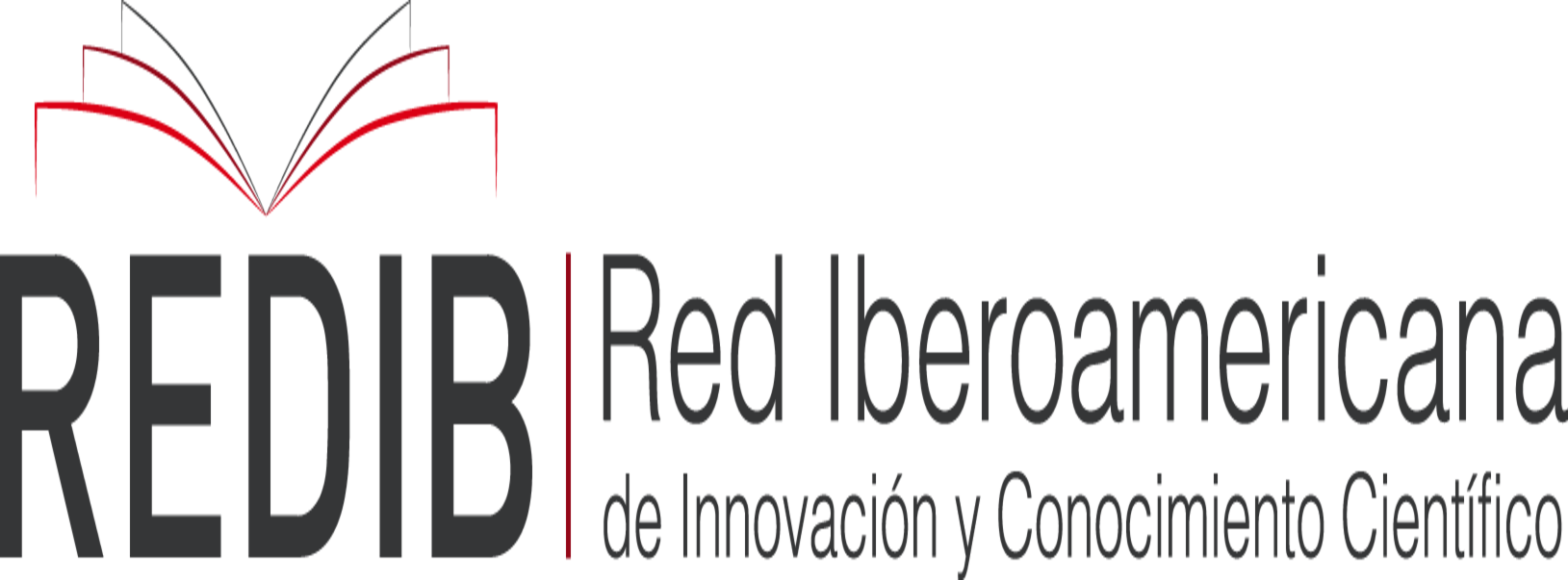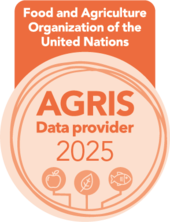Biorrecuperación de aguas residuales con microorganismos
DOI:
https://doi.org/10.17268/manglar.2021.044Abstract
El agua es un elemento insustituible que requiere de procesos y medidas sanitarias. La creciente demanda ha promovido de diseños para recuperarla y reutilizarla, uno de los sistemas de innovación es la biorremediación que permite la aplicación de agentes microbianos capaces de degradar los contaminantes. Esta investigación está constituida por la revisión de literatura de fuente primaria para obtener criterios en la aplicación de bacterias para el tratamiento de aguas residuales y la reutilización. La Biorremediación ha demostrado ser una de las alternativas más eficientes y rentables para la eliminación de cuerpos que contaminan el ecosistema, en comparación con los sistemas convencionales físicos – químicas. Sin embargo, los resultados de esta estrategia remediadora dependerán del lugar y condiciones ambientales, es por esta razón la importancia del hallazgo de nuevas biotecnologías e implementación de técnicas rentables aplicadas al bienestar del ambiente y seguridad de la sociedad. Para estudios futuros relacionados a la aplicación de algún tipo de biorremediación se debe realizar un análisis previo de la factibilidad ecológica y económica según las condiciones del ecosistema dañado.Downloads
References
Al-Zboon, K., & Al-Ananzeh, N. (2008). Performance of wastewater treatment plants in Jordan and suitability for reuse. African Journal of Biotechnology, 7(15), 2621-2629.
Angelakis, A. N., & Durham, B. (2008). Water recycling and reuse in EUREAU countries: Trends and challenges. Desalination, 218(1-3), 3-12.
Azunre, G. A., Amponsah, O., Peprah, C., Takyi, S. A., & Braimah, I. (2019). A review of the role of urban agriculture in the sustainable city discourse. Cities, 93, 104-119.
Balapure, K., Jain, K., Bhatt, N., & Madamwar, D. (2016). Exploring bioremediation strategies to enhance the mineralization of textile industrial wastewater through sequential anaerobic-microaerophilic process. International Biodeterioration and Biodegradation, 106, 97-105.
Bartram, J., Brocklehurst, C., Fisher, M. B., Luyendijk, R., Hossain, R., Wardlaw, T., & Gordon, B. (2014). Global monitoring of water supply and sanitation: History, methods and future challenges. International Journal of Environmental Research and Public Health, 11(8), 8137-8165.
Becerra-Castro, C., Lopes, A. R., Vaz-Moreira, I., Silva, E. F., Manaia, C. M., & Nunes, O. C. (2015). Wastewater reuse in irrigation: A microbiological perspective on implications in soil fertility and human and environmental health. Environment International, 75, 117-135.
Bouwer, H. (2000). Integrated water management: Emerging issues and challenges. Agricultural Water Management, 45(3), 217-228.
Brandt, R., Merkl, N., Schultze-Kraft, R., Infante, C., & Broll, G. (2006). Potential of vetiver (Vetiveria zizanioides (L.) Nash) for phytoremediation of petroleum hydrocarbon-contaminated soils in Venezuela. International Journal of Phytoremediation, 8(4), 273-284.
Cairncross, S. (2003). Water supply and sanitation: Some misconceptions. Tropical Medicine and International Health, 8(3), 193-195.
Carr, G., Potter, R. B., & Nortcliff, S. (2011). Water reuse for irrigation in Jordan: Perceptions of water quality among farmers. Agricultural Water Management, 98(5), 847-854.
Cetrulo, T. B., Marques, R. C., Malheiros, T. F., & Cetrulo, N. M. (2020). Monitoring inequality in water access: Challenges for the 2030 Agenda for Sustainable Development. Science of the Total Environment, 727.
Chauhan, J. S., & Kumar, S. (2020). Wastewater ferti-irrigation: an eco-technology for sustainable agriculture. Sustainable Water Resources Management, 6(3).
Chen, L., Lin, J., Pan, D., Ren, Y., Zhang, J., Zhou, B., . . . Lin, J. (2020). Ammonium Removal by a Newly Isolated Heterotrophic Nitrification–Aerobic Denitrification Bacteria Pseudomonas Stutzeri SDU10 and Its Potential in Treatment of Piggery Wastewater. Current Microbiology, 77(10), 2792-2801.
Costas, R., Moreno, L., & Bordons, M. (2008). Overlapping and singularity of MEDLINE, WoS and IME for the analysis of the scientific activity of a region in Health Sciences. Revista Espanola de Documentacion Cientifica, 31(3), 327-343.
Craun, G. F., & Calderon, R. L. (2001). Waterborne disease outbreaks caused by distribution system deficiencies. Journal / American Water Works Association, 93(9), 64-75.
Da Silva, T. L. (2018). Wastewater quality for reuse in irrigated agriculture. IRRIGA, 1(Special Edition 30 years PGIRRIGA), 101-111.
Dariva, M. A., & Araujo, A. (2021) Implementation, Performance and Waste Management Analysis of Decentralized Wastewater Treatment Systems Using BIM Technology. In: Vol. 98. Lecture Notes in Civil Engineering (pp. 297-319): Springer.
Del Puerto Rodríguez, A. M., Concepción Rojas, M., & Iglesias Fernández, A. M. (1999). Calidad del agua y enfermedades de transmisión digestiva. Revista Cubana de Medicina General Integral, 15(5), 495-502.
Di Matteo, G., Nardi, P., Grego, S., & Guidi, C. (2018). Bibliometric analysis of Climate Change Vulnerability Assessment research. Environment Systems and Decisions, 38(4), 508-516.
Drechsel, P., & Evans, A. E. V. (2010). Wastewater use in irrigated agriculture. Irrigation and Drainage Systems, 24(1-2), 1-3.
Fito, J., & Van Hulle, S. W. H. (2020). Wastewater reclamation and reuse potentials in agriculture: towards environmental sustainability. Environment, Development and Sustainability.
Flores-Magdaleno, H., Mancilla-Villa, O. R., Mejía-Saenz, E., del Carmen Olmedo-Bolaños, M., Bolaños, O., & Bautista-Olivas, A. L. (2011). Heavy metals in agricultural soils and irrigation wastewater of Mixquiahuala, Hidalgo, Mexico. African Journal of Agricultural Research, 6(24), 5505-5511.
Fuller, J. A., Goldstick, J., Bartram, J., & Eisenberg, J. N. S. (2016). Tracking progress towards global drinking water and sanitation targets: A within and among country analysis. Science of the Total Environment, 541, 857-864.
Garzón, J. M., Rodríguez-Miranda, J. P., & Hernández-Gómez, C. (2017). Aporte de la biorremediación para solucionar problemas de contaminación y su relación con el desarrollo sostenible Universidad y Salud, 19, 309-318.
Giné-Garriga, R., Flores-Baquero, Ó., Jiménez-Fdez de Palencia, A., & Pérez-Foguet, A. (2017). Monitoring sanitation and hygiene in the 2030 Agenda for Sustainable Development: A review through the lens of human rights. Science of the Total Environment, 580, 1108-1119.
Gopi Kiran, M., Pakshirajan, K., & Das, G. (2017). A new application of anaerobic rotating biological contactor reactor for heavy metal removal under sulfate reducing condition. Chemical Engineering Journal, 321, 67-75.
Grasso, D. (2019). Evolving Environmental Engineering for the 21st Century. Environmental Science and Technology, 53(13), 7183-7184.
Gregorio Bellido, J., Barcellos, C., Santos Barbosa, F. D., & Inacio Bastos, Y. F. (2010). Environmental sanitation and mortality associated with waterborne diseases in children under 5 years of age in Brazil. Revista Panamericana de Salud Publica/Pan American Journal of Public Health, 28(2), 114-120.
Grunwald, A. (2016) Water Ethics – Orientation for Water Conflicts as Part of Inter- and Transdisciplinary Deliberation. In. Water Resources Development and Management (pp. 11-29): Springer.
Gupta, J., & Vegelin, C. (2016). Sustainable development goals and inclusive development. International Environmental Agreements: Politics, Law and Economics, 16(3), 433-448.
Hák, T., Janoušková, S., & Moldan, B. (2016). Sustainable Development Goals: A need for relevant indicators. Ecological Indicators, 60, 565-573.
Hanjra, M. A., Blackwell, J., Carr, G., Zhang, F., & Jackson, T. M. (2012). Wastewater irrigation and environmental health: Implications for water governance and public policy. International Journal of Hygiene and Environmental Health, 215(3), 255-269.
Harremoës, P. (2002). Water ethics - A substitute for over-regulation of a scarce resource. Water Science and Technology, 45(8), 113-124.
He, T., Li, Z., Sun, Q., Xu, Y., & Ye, Q. (2016). Heterotrophic nitrification and aerobic denitrification by Pseudomonas tolaasii Y-11 without nitrite accumulation during nitrogen conversion. Bioresource Technology, 200, 493-499.
Helmecke, M., Fries, E., & Schulte, C. (2020). Regulating water reuse for agricultural irrigation: risks related to organic micro-contaminants. Environmental Sciences Europe, 32(1).
Hernández-Zamora, M., Cristiani-Urbina, E., Martínez-Jerónimo, F., Perales-Vela, H. V., Ponce-Noyola, T., Montes-Horcasitas, M. C., & Cañizares-Villanueva, R. O. (2015). Bioremoval of the azo dye Congo Red by the microalga Chlorella vulgaris. Environmental Science and Pollution Research, 22(14), 10811-10823.
Hider, P., & Pymm, B. (2008). Empirical research methods reported in high-profile LIS journal literature. Library and Information Science Research, 30(2), 108-114.
Huang, X., Weisener, C. G., Ni, J., He, B., Xie, D., & Li, Z. (2020). Nitrate assimilation, dissimilatory nitrate reduction to ammonium, and denitrification coexist in Pseudomonas putida Y-9 under aerobic conditions. Bioresource Technology, 312.
Idelovitch, E., & Ringskog, K. (1997). Wastewater treatment in Latin America: old and new options: World Bank; Directions in Development.
Intriago, J. C., López-Gálvez, F., Allende, A., Vivaldi, G. A., Camposeo, S., Nicolás Nicolás, E., . . . Pedrero Salcedo, F. (2018). Agricultural reuse of municipal wastewater through an integral water reclamation management. Journal of Environmental Management, 213, 135-141.
Jaramillo, M. F., & Restrepo, I. (2017). Wastewater reuse in agriculture: A review about its limitations and benefits. Sustainability (Switzerland), 9(10).
Jasim, N. A. (2020). The design for wastewater treatment plant (WWTP) with GPS X modelling. Cogent Engineering, 7(1).
Kalavrouziotis, I. K. (2015). The reuse of municipal wastewater in soils. Global Nest Journal, 17(3), 474-486.
Khalid, S., Shahid, M., Natasha, Bibi, I., Sarwar, T., Shah, A. H., & Niazi, N. K. (2018). A review of environmental contamination and health risk assessment of wastewater use for crop irrigation with a focus on low and high-income countries. International Journal of Environmental Research and Public Health, 15(5).
Lade, H., Kadam, A., Paul, D., & Govindwar, S. (2015). Biodegradation and detoxification of textile azo dyes by bacterial consortium under sequential microaerophilic/aerobic processes. EXCLI Journal, 14, 158-174.
Lakatos, G. (2018). Biological wastewater treatment. In Wastewater and Water Contamination: Sources, Assessment and Remediation (pp. 105-128): Nova Science Publishers, Inc.
Lee, E. J., & Schwab, K. J. (2005). Deficiencies in drinking water distribution systems in developing countries. Journal of Water and Health, 3(2), 109-127.
Lehn, H., & Parodi, O. (2009). Water - Fundamental and strategic resource of the 21st century. Umweltwissenschaften und Schadstoff-Forschung, 21(3), 272-281.
Li, C., Yang, J., Wang, X., Wang, E., Li, B., He, R., & Yuan, H. (2015). Removal of nitrogen by heterotrophic nitrification-aerobic denitrification of a phosphate accumulating bacterium Pseudomonas stutzeri YG-24. Bioresource Technology, 182, 18-25.
Li, J., Peng, Y., Zhang, L., Gao, R., Yang, L., Liu, Q., . . . Wang, S. (2020). Enhanced nitrogen removal assisted by mainstream partial-anammox from real sewage in a continuous flow A2/O reactor. Chemical Engineering Journal, 400.
Li, K., Liu, Q., Fang, F., Luo, R., Lu, Q., Zhou, W., . . . Ruan, R. (2019). Microalgae-based wastewater treatment for nutrients recovery: A review. Bioresource Technology, 291.
Li, N., Hu, Y., Lu, Y. Z., Zeng, R. J., & Sheng, G. P. (2016). In-situ biogas sparging enhances the performance of an anaerobic membrane bioreactor (AnMBR) with mesh filter in low-strength wastewater treatment. Applied Microbiology and Biotechnology, 100(13), 6081-6089.
Li, X., Sun, S., Yuan, H., Badgley, B. D., & He, Z. (2017). Mainstream upflow nitritation-anammox system with hybrid anaerobic pretreatment: Long-term performance and microbial community dynamics. Water Research, 125, 298-308.
Liu, X., Wang, L., & Pang, L. (2018). Application of a novel strain Corynebacterium pollutisoli SPH6 to improve nitrogen removal in an anaerobic/aerobic-moving bed biofilm reactor (A/O-MBBR). Bioresource Technology, 269, 113-120.
Lyu, S., Chen, W., Zhang, W., Fan, Y., & Jiao, W. (2016). Wastewater reclamation and reuse in China: Opportunities and challenges. Journal of Environmental Sciences (China), 39, 86-96.
Machineni, L. (2019). Review on biological wastewater treatment and resources recovery: Attached and suspended growth systems. Water Science and Technology, 80(11), 2013-2026.
Mahamadi, C., & Nharingo, T. (2010). Utilization of water hyacinth weed (Eichhornia crassipes) for the removal of Pb(II), Cd(II) and Zn(II) from aquatic environments: An adsorption isotherm study. Environmental Technology, 31(11), 1221-1228.
Mara, D. D., & Feachem, R. G. A. (1999). Water- and excreta-related diseases: Unitary environmental classification. Journal of Environmental Engineering, 125(4), 334-339.
Mora-Ravelo, S. G., Alarcón, A., Rocandio-Rodríguez, M., & Vanoye-Eligio, V. (2017). Bioremediation of wastewater for reutilization in agricultural systems: A review. Applied Ecology and Environmental Research, 15(1), 33-50.
Motamedi, H., & Jafari, M. (2020). Screening Heterotrophic Ammonia Removal and Aerobic Denitrifying Bacteria from Wastewater of Ammonia Production Units of a Petrochemical Industry. Current Microbiology, 77(9), 2207-2214.
Nasir, N. M., Bakar, N. S. A., Lananan, F., Abdul Hamid, S. H., Lam, S. S., & Jusoh, A. (2015). Treatment of African catfish, Clarias gariepinus wastewater utilizing phytoremediation of microalgae, Chlorella sp. with Aspergillus niger bio-harvesting. Bioresource Technology, 190, 492-498.
Niemczynowicz, J., & Iwra, M. (1996). Megacities from a water perspective. Water International, 21(4), 198-205.
Paul, T., & Saha, N. C. (2019). Environmental Arsenic and Selenium Contamination and Approaches Towards Its Bioremediation Through the Exploration of Microbial Adaptations: A Review. Pedosphere, 29(5), 554-568.
Pereira, L. S., Duarte, E., & Fragoso, R. (2014). Water Use: Recycling and Desalination for Agriculture. In Encyclopedia of Agriculture and Food Systems (pp. 407-424): Elsevier.
Pérez-Cordón, G., Rosales, M. J., Valdez, R. A., Vargas-Vásquez, F., & Cordova, O. (2008). Detección de parásitos intestinales en agua y alimentos de Trujillo, Perú. Rev Peru Med Exp Salud Publica, 25(1), 144-148.
Perlman, H. (2016). How much water is there on, in, and above the Earth? Retrieved December, 6, 2016.
Petrovich, M. L., Ben Maamar, S., Hartmann, E. M., Murphy, B. T., Poretsky, R. S., & Wells, G. F. (2019). Viral composition and context in metagenomes from biofilm and suspended growth municipal wastewater treatment plants. Microbial Biotechnology, 12(6), 1324-1336.
Postel, S. L. (2000). Entering an era of water scarcity: The challenges ahead. Ecological Applications, 10(4), 941-948.
Queiroz, V. C., de Carvalho, R. C., & Heller, L. (2020). New approaches to monitor inequalities in access to water and sanitation: The SDGs in Latin America and the Caribbean. Water (Switzerland), 12(4).
Quist-Jensen, C. A., Macedonio, F., & Drioli, E. (2015). Membrane technology for water production in agriculture: Desalination and wastewater reuse. Desalination, 364, 17-32.
Rinia, E. J., Van Leeuwen, T. N., Van Vuren, H. G., & Van Raan, A. F. J. (1998). Comparative analysis of a set of bibliometric indicators and central peer review criteria Evaluation of condensed matter physics in the Netherlands. Research Policy, 27(1), 95-107.
Risso, V. G. (2017). Study of the research methods and data collection techniques used in library and information science. Revista Espanola de Documentacion Cientifica, 40(2).
Rodríguez Miranda, J. P., García-Ubaque, C. A., & García-Ubaque, J. C. (2016). Waterborne diseases and basic sanitation in Colombia. Revista de Salud Publica, 18(5), 738-745.
Rosemarin, A. (2005). Sustainable sanitation and water in small urban centres. Water Science and Technology, 51(8), 109-118.
Salgot, M., Campos, C., Galofré, B., & Tapias, J. C. (2001). Biological control tools for wastewater reclamation and reuse. A critical review. Water Science and Technology, 43(10), 195-201.
Salmon, J. (2017). Quantitative or qualitative research: Methods, ethical issues and future directions. In Data Collection: Methods, Ethical Issues and Future Directions (pp. 3-14): Nova Science Publishers, Inc.
Sancho, R. (2001). Medición de las actividades de ciencia y tecnología. Estadísticas e indicadores empleados. Revista española de Documentación Científica, 24(4), 382-404.
Sapkota, A. R. (2019). Water reuse, food production and public health: Adopting transdisciplinary, systems-based approaches to achieve water and food security in a changing climate. Environmental Research, 171, 576-580.
Sato, T., Qadir, M., Yamamoto, S., Endo, T., & Zahoor, A. (2013). Global, regional, and country level need for data on wastewater generation, treatment, and use. Agricultural Water Management, 130, 1-13.
Scheierling, S. M., Bartone, C. R., Mara, D. D., & Drechsel, P. (2011). Towards an agenda for improving wastewater use in agriculture. Water International, 36(4), 420-440.
Sen, T. K. (2015). Physical, chemical and biological treatment processes for water and wastewater: Nova Science Publishers, Inc.
Shannon, M. A., Bohn, P. W., Elimelech, M., Georgiadis, J. G., Marĩas, B. J., & Mayes, A. M. (2008). Science and technology for water purification in the coming decades. Nature, 452(7185), 301-310.
Siebert, S., Burke, J., Faures, J. M., Frenken, K., Hoogeveen, J., Döll, P., & Portmann, F. T. (2010). Groundwater use for irrigation - A global inventory. Hydrology and Earth System Sciences, 14(10), 1863-1880.
Siles, J. A., & Michán, C. (2020). Bacteria, archae, fungi and viruses: it takes a community to eliminate waste. Microbial Biotechnology, 13(4), 892-894.
Stevenson, A., & Cordy, J. R. (2015). Parse views with Boolean grammars. Science of Computer Programming, 97(P1), 59-63.
Sun, Z., Lv, Y., Liu, Y., & Ren, R. (2016). Removal of nitrogen by heterotrophic nitrification-aerobic denitrification of a novel metal resistant bacterium Cupriavidus sp. S1. Bioresource Technology, 220, 142-150.
Thebo, A. L., Drechsel, P., Lambin, E. F., & Nelson, K. L. (2017). A global, spatially-explicit assessment of irrigated croplands influenced by urban wastewater flows. Environmental Research Letters, 12(7).
Torres Calderón, J. (2013). Fitorremediación de aguas residuales por hidroponía. Tesis para obtener el grado de Maestro en Ciencias en Ingeniería Ambiental. Instituto Politécnico Nacional. México.
Tripathi, M. P., Bisen, Y., & Tiwari, P. (2019). Reuse of wastewater in agriculture. In Water Conservation, Recycling and Reuse: Issues and Challenges (pp. 231-258): Springer Singapore.
Vergine, P., Lonigro, A., Salerno, C., Rubino, P., Berardi, G., & Pollice, A. (2017). Nutrient recovery and crop yield enhancement in irrigation with reclaimed wastewater: a case study. Urban Water Journal, 14(3), 325-330.
Vivaldi, G. A., Camposeo, S., Mastro, M. A., Lacolla, G., Lonigro, A., & Rubino, P. (2015) Effect of irrigation with different municipal wastewaters on ripening indexes and chemical components of nectarine fruits. In: Vol. 1084. Acta Horticulturae (pp. 401-407): International Society for Horticultural Science.
Wang, L., Li, Y., Chen, P., Min, M., Chen, Y., Zhu, J., & Ruan, R. R. (2010). Anaerobic digested dairy manure as a nutrient supplement for cultivation of oil-rich green microalgae Chlorella sp. Bioresource Technology, 101(8), 2623-2628.
Wang, Y., Ho, S. H., Cheng, C. L., Guo, W. Q., Nagarajan, D., Ren, N. Q., . . . Chang, J. S. (2016). Perspectives on the feasibility of using microalgae for industrial wastewater treatment. Bioresource Technology, 222, 485-497.
Who/Unicef. (2015). Progress on Sanitation and Drinking Water: 2015 Update and MDG Assessment. Geneva. Progress on Sanitation and Drinking Water-2015 Update and MDG Assessment.
World Bank Group. (2016). Annual freshwater withdrawals, agriculture (% of total freshwater withdrawal). Retrieved from The World Bank: https://data.worldbank.org/indicator/er.h2o.fwag.zs
World Health, O. (2016). World health statistics 2016: monitoring health for the SDGs, sustainable development goals. Geneva: World Health Organization.
Wu, G., & Yin, Q. (2020). Microbial niche nexus sustaining biological wastewater treatment. npj Clean Water, 3, 33.
Wu, L. F., Chen, P. C., Huang, A. P., & Lee, C. M. (2012). The feasibility of biodiesel production by microalgae using industrial wastewater. Bioresource Technology, 113, 14-18.
Xu, M., Li, P., Tang, T., & Hu, Z. (2015). Roles of SRT and HRT of an algal membrane bioreactor system with a tanks-in-series configuration for secondary waste-water effluent polishing. Ecological Engineering, 85, 257-264.
Xu, Y., He, T., Li, Z., Ye, Q., Chen, Y., Xie, E., & Zhang, X. (2017). Nitrogen Removal Characteristics of Pseudomonas putida Y-9 Capable of Heterotrophic Nitrification and Aerobic Denitrification at Low Temperature. BioMed Research International, 2017.
Yang, B., Xu, H., Yang, S., Bi, S., Li, F., Shen, C., . . . Liu, Y. (2018). Treatment of industrial dyeing wastewater with a pilot-scale strengthened circulation anaerobic reactor. Bioresource Technology, 264, 154-162.
Yang, L., Ren, Y. X., Liang, X., Zhao, S. Q., Wang, J. P., & Xia, Z. H. (2015). Nitrogen removal characteristics of a heterotrophic nitrifier Acinetobacter junii YB and its potential application for the treatment of high-strength nitrogenous wastewater. Bioresource Technology, 193, 227-233.
Yang, Y., Liu, Y., Yang, T., & Lv, Y. (2017). Characterization of a microbial consortium capable of heterotrophic nitrifying under wide C/N range and its potential application in phenolic and coking wastewater. Biochemical Engineering Journal, 120, 33-40.
Yao, Y., Hu, L., Li, S., Zeng, Q., Zhong, H., & He, Z. (2020). Exploration on the bioreduction mechanisms of Cr(VI) and Hg(II) by a newly isolated bacterial strain Pseudomonas umsongensis CY-1. Ecotoxicology and Environmental Safety, 201.
Zhang, J., Wang, B., Chen, X., Wu, X., & Zhang, D. (2019). Research trends on land use changes during 1991–2015: A bibliometric analysis. Lowland Technology International, 21(1), 61-70.
Zhang, N., Chen, H., Lyu, Y., & Wang, Y. (2019). Nitrogen removal by a metal-resistant bacterium, Pseudomonas putida ZN1, capable of heterotrophic nitrification–aerobic denitrification. Journal of Chemical Technology and Biotechnology, 94(4), 1165-1175.
Zhu, H., Han, Y., Ma, W., Han, H., Ma, W., & Xu, C. (2018). New insights into enhanced anaerobic degradation of coal gasification wastewater (CGW) with the assistance of graphene. Bioresource Technology, 262, 302-309.
Downloads
Published
Versions
- 2022-10-20 (4)
- 2022-10-20 (3)
- 2022-10-20 (2)
- 2021-11-28 (1)
Issue
Section
License
Copyright (c) 2022 Juan José Humanante Cabrera, Carlos Alberto Deza Navarrete, Lucrecia Cristina Moreno Alcivar, Ana Mercedes Grijalva Endara

This work is licensed under a Creative Commons Attribution 4.0 International License.

Manglar is an open access journal distributed under the terms and conditions of Creative Commons Attribution 4.0 International license









